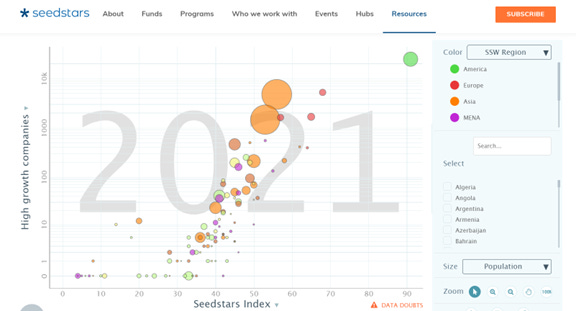“Over $2.5 Trillion of aid and investment has been spent on economic development in emerging economies since the end of World War II with mixed results.” -William Easterly, New York University.
Photo by Muhammad-taha Ibrahim on Unsplash
Our Managing Director, Dan Evans, has been conducting a long-running research effort at New York University to explore the use of machine intelligence in generating economic development policy recommendations for creating more vibrant start-up ecosystems. This work is now expanding with a new collaborative effort with researchers from Stellenbosch University in South Africa.
Most economic development organizations agree that entrepreneurship and innovation are key drivers of sustainable economic growth. However, these activities can be challenging to foster without a start-up ecosystem that is structured to fuel this growth.
Governments around the world are increasingly recognizing this need and are making efforts to create an environment that encourages entrepreneurship and innovation. Economic aid and policy development play a critical role in providing the resources, incentives, and support needed for entrepreneurs to succeed.
One of the most pressing challenges is creating an analytical framework that empowers policymakers to accurately assess start-up ecosystems and compare them to other ecosystems. Then using this knowledge they can identify policies that will yield the greatest Return on Investment.
A framework that has received significant attention over the past 20 years is called ecosystem mapping. Based on our NYU research, we have determined that the current frameworks can be characterized by two different approaches:
“Top-down”: Exemplified by organizations such as Seedstars and Startup Genome. This approach develops an overall assessment or metric of a startup ecosystem. This assessment also typically includes functions in the ecosystem that could be improved to strengthen it. This approach mainly informs policymakers.
“Bottom-up”: Aimed at the groups that are missing from the “top-down” approach. This framework provides a list of resources and other items to members of the ecosystem sometimes superimposed over a map or sometimes in a simple graphic or a list analogous to an old-fashioned telephone book.
Example of a “top-down” approach developed by Seedstars.
Example of a “bottom-up” approach developed by Entrepreneur Quarterly.
“Despite the popularity of the entrepreneurial ecosystem approach in science and policy, there is a scarcity of credible, accurate and comparable metrics of entrepreneurial ecosystems. This is a severe shortcoming for both scientific progress and successful policy.” -Leendertse, et al.
While there is value generated by both of these approaches, we believe that there is a more effective method to assess and classify start-up ecosystems. Our proposed technique can empower policymakers to generate more effective policy recommendations while making key connections for ecosystem participants, better addressing the aims of both methodologies.
We initially developed an early version of this methodology, which leverages machine intelligence and network analysis, based on previous research at West Point that focused on terrorism and insurgent networks. In our next post, we will introduce our innovative approach to start-up ecosystem mapping.
As this research effort continues to grow, we will seek additional collaborators, including influencers and policymakers in start-up ecosystems. Our Big Hairy Audacious Goal (BHAG) is to establish a research center at Stellenbosch that will map (and maintain) all start-up ecosystems in emerging marketswhile continuing to refine ecosystem intervention strategies. If you have an interest in collaborating, funding, or know someone (or a group) who shares our passion, please contact the Storm King team at info@stormkinganalytics.com








